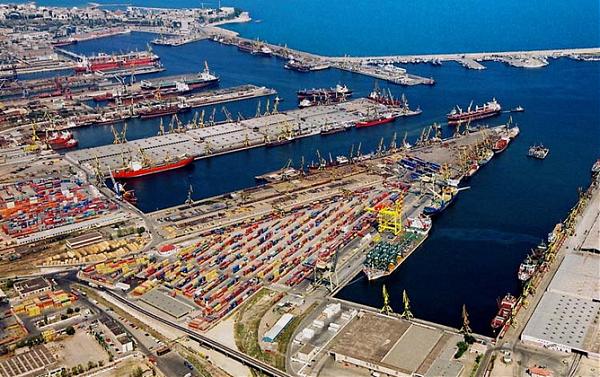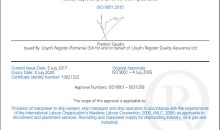Romanian Port of Constanta is a part of the city history. Starting from the 6th century b. C. was discovered Tomis the antique city of Constanta. It was known as a trade center mainly for its geographical characteristics. Tomis city was situated near the Black Sea Water one of its main characteristic for becoming an important maritime port.
Over years people from these surroundings faced various influences as Greek, Persian, and Ottoman. Each historical period hallmarked this territory which followed an uptrend since today.
The Port of Constanta is a collective focusing road. It has the benefit of being one of the most important centers of distribution getting the advantage of modern multifunctional facilities, deep water, providing easy access to the Central East European countries. The Port of Constanta is interconnected with Danube route known as the 7th Pan European Corridor.
In 2011 stopped over here: barges, cargoes, ferry boats, LPG, OBO, passenger, port container, RORO, heavy lift and others. The main vessels passing through Romanian Port of Constanta are cargoes with a number of 2879 stopovers.
The main cargoes transiting the Port of Constanta in 2011 as Port of Constanta site posted, were sugar beet, animals 22,817 tones, other articles 6,529,296 tones, metal articles 1,558, frozen vegetables and fruits/ fresh vegetables and fruits 38,062, cellulose and paper 7,639, grain 9,534,972, cement, lime and 328,160, mineral fuel 3, 151, 964, cars equipment 355,904, natural and chemical fertilizer 2,015,114, wood and float 941,453, minerals 218,748, oil 5,534,289, leader and textile clothing and accessories 64,825, aliments and messes 525,758, chemical products 1, 484,861, oil products 3,480,437, seeds, glass and ceramics 38,591.
At the moment the Port of Constanta has many development goals. European Union Projects help the port to achieve its goals. Romania focuses not only on the port but also on the entire national infrastructure. Improving this aspect provides a better access to the main routes for cargoes coming up from all over the world.
Constanta Port area is free tax. This aspect allows the strength of the general pattern for external trade. Romanian maritime port system consists in the main Port of Constanta and the other two satellite ports named Midia and Mangalia. The system is under coordination of the Maritime Ports Administration, ,, Administratia Porturilor Maritime Constanta S.A.”
As from 2007 Romania started developing its infrastructure based on POS-T, ,,Programul Operational Sectorial Transport”. Between 2007 and 2013 the budget allocated was around EUR 5,7 million.
This program includes many developing activities. Some of them as they are highlighted on the POS-T on-line brochure are: Poarta Alba Midia Navodari ditch signaling system modernization as locks traffic lights, port lights and many other mains of signalization, Maritime Port of Constanta embankment extension and auto bridge access on Danube-Black Sea canal situated on 0+540 km, and improvement of auto route access to the Maritime Port and POS – T includes also an improved vessels traffic management on Danube-Black Sea canal and also inland waters traffic info management.
Romania has many development strategies based also on sharing development experiences with other states. For example Romanian Authorities work together with Dutch specialists on changing know how generating the best conditions for Romanian Port of Constanta to develop its main characteristics for becoming the most important East entrance corridor for the Central East Europe.
The Port of Constanta as we can see started its evolution since the sixth century and it is getting better every day not only because of the geographical location but also for the today European projects achieving every day the main goal of growing near Constanta city a useful and modern port.








Leave a Comment